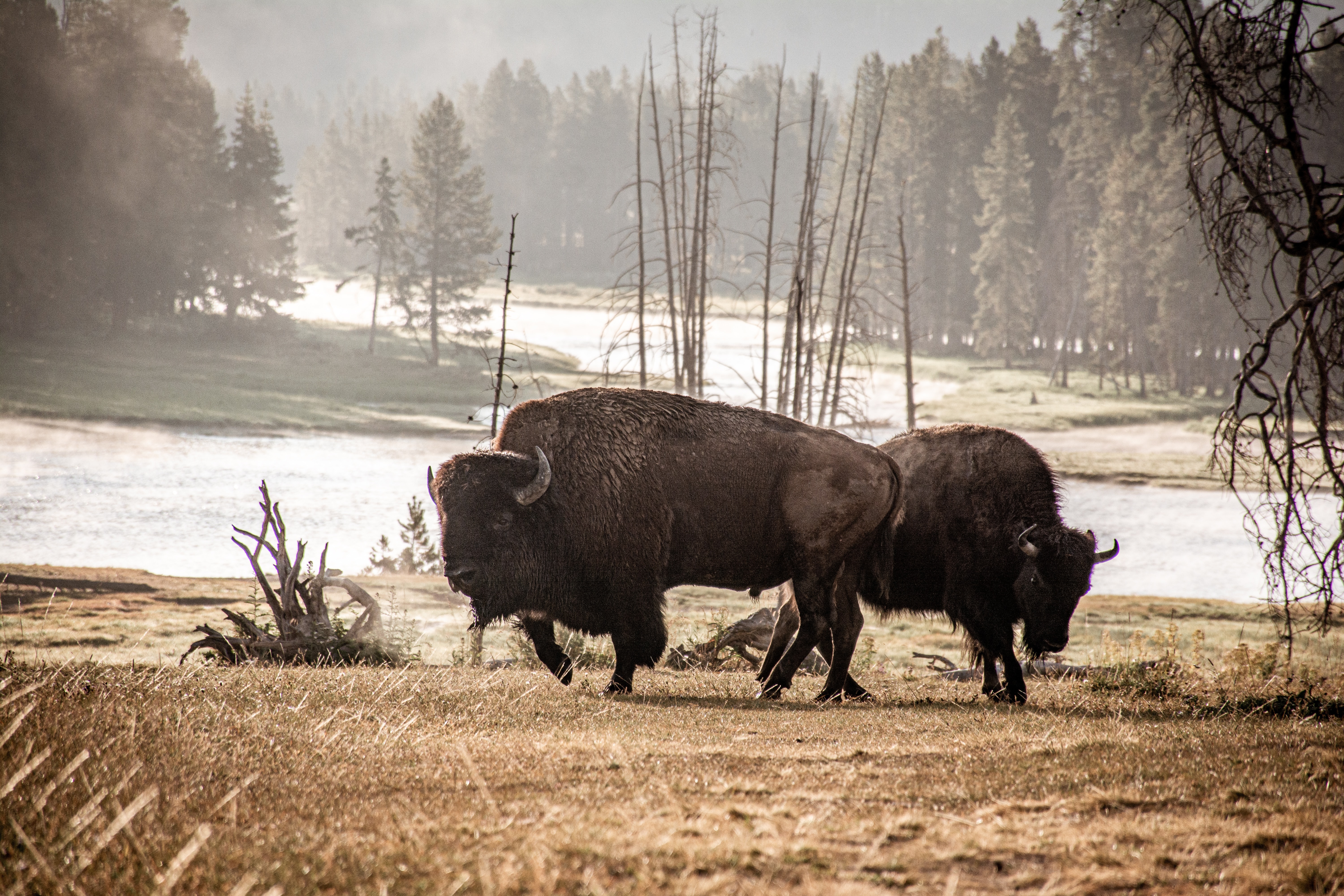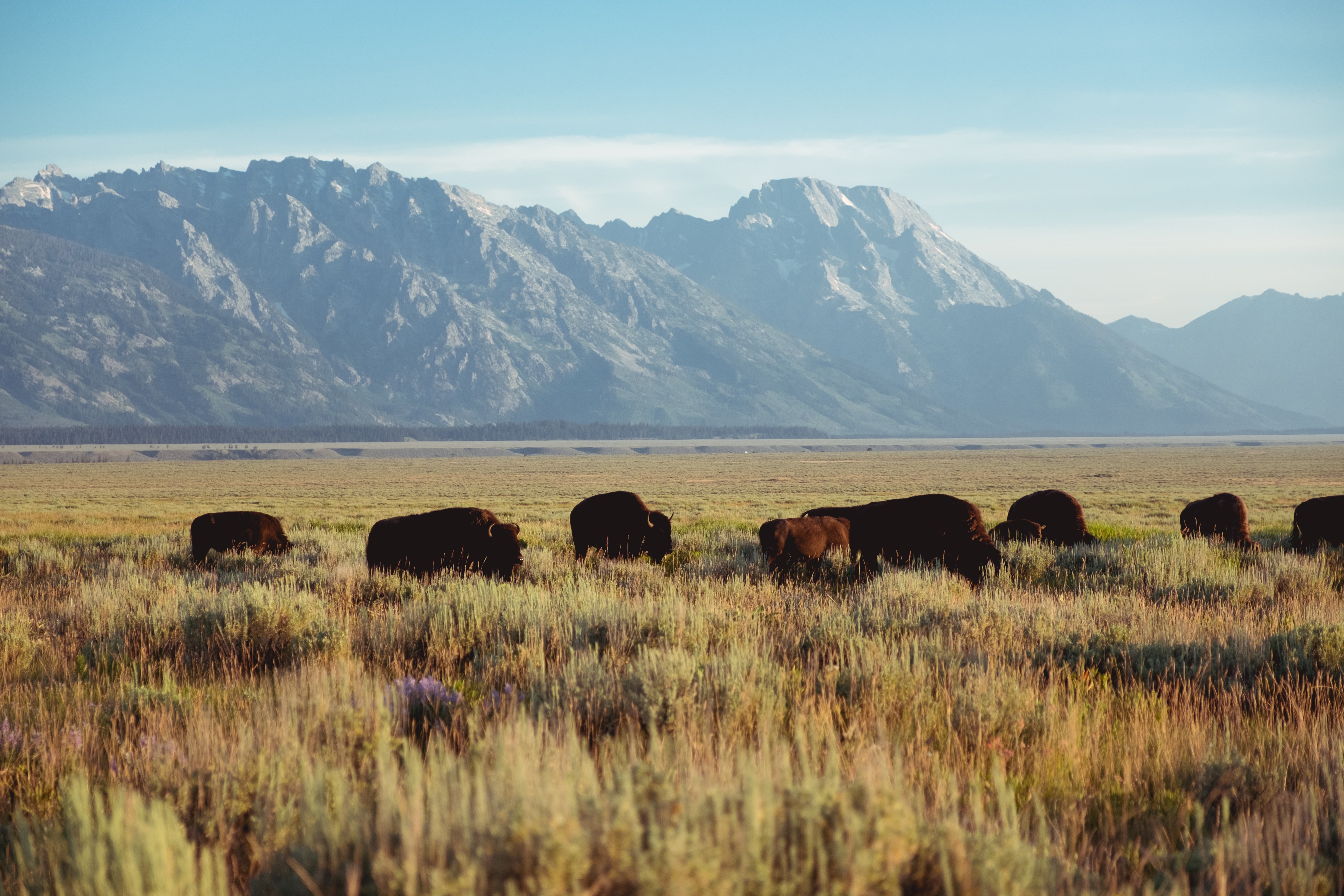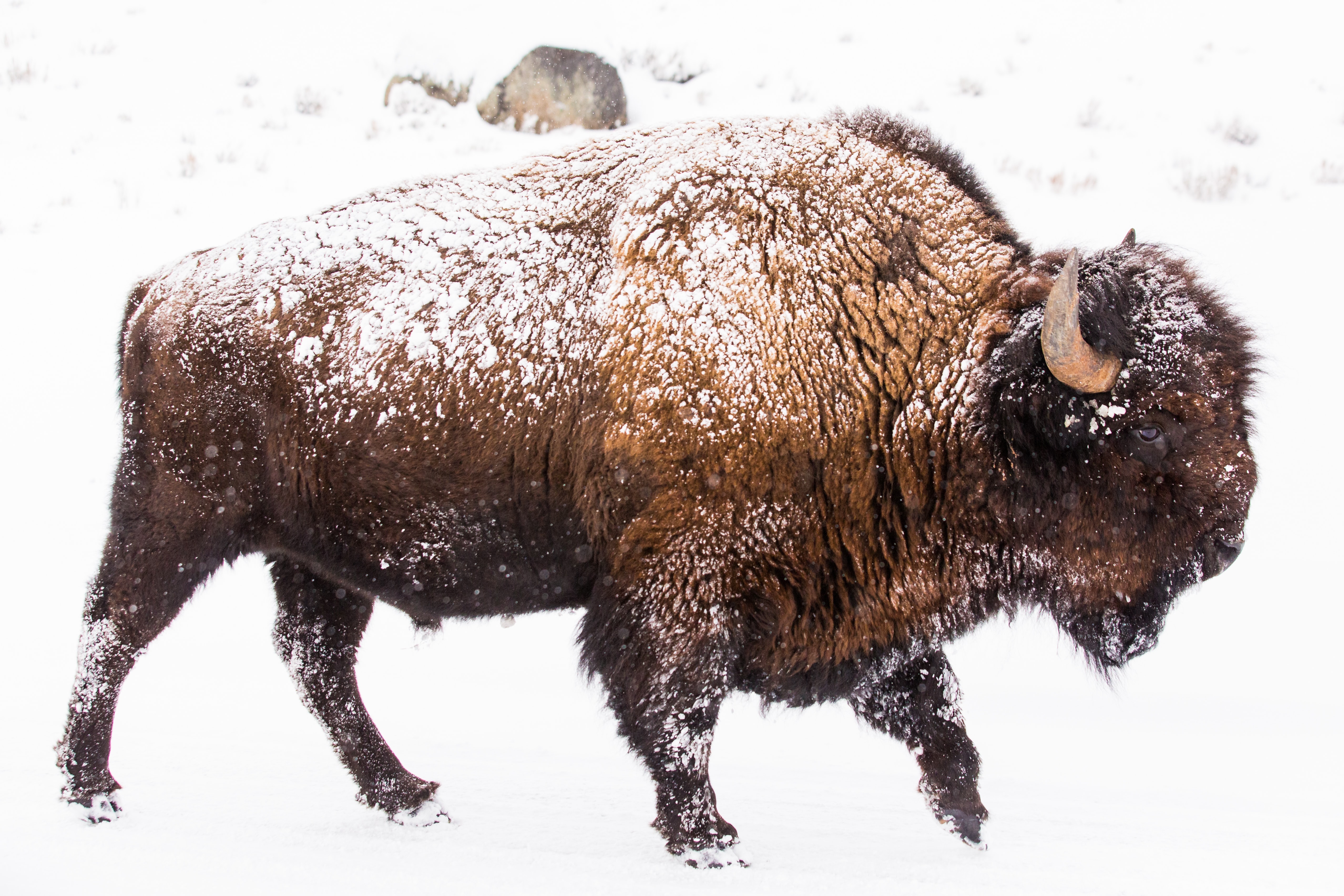Bison

Sean Mitchell
Oct 18 | 3 min read

Photo credit: Unsplash - Yannick Menard
The bison of Yellowstone are the last truly wild bison in America. Bison nearly went exctinct due to hunting, but the park's preservation saved them. They are the largest mammals in North America, with males weighing around a whopping 2,000 lbs. Within the park, wolves and bears are the only natural predators of adult bison. Bison primarily feed on grasses and sedges. Although they are herbivores, they can be highly aggressive and dangerous due to their massive size. So watch out for bison and keep your distance from them.

Photo Credit: Unsplash - Nick Dunlap
One of the bison's greatest killers is the harsh winter of Yellowstone. Temperatures go well below freezing, often times recording below -66° fahrenheit. One out of ten bison die every winter, succumbign to the cold. The heavy snows makes it difficult for the bison to find grasses and sedges to feed upon, cutting down their supply of food. Yellowstone's most unique feature plays a critical role in helping the bison survive the winter: the hot springs. During the winter, bison typically migrate from the grasslands to the hot springs to keep warm. So if you are visiting the park in the spring, go check out the bison in the grasslands. If you are at the park in the winter, go check them out by the hot springs.

Photo Credit: Unsplash - Daniel Lloyd Blunk Fernandez